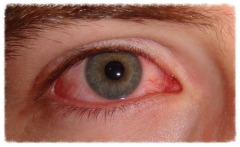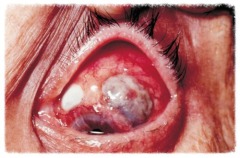Help for chronic red eyes
Our eyes are one of the first things people look at when they first meet. Having red tired looking eyes is both unattractive and sends the wrong message to those around us. This problem has grown so huge that pharmacy shelves are filled with products to treat red irritated eyes. Major brands like Visine and Clear eyes are regularly advertised on national television and have even become part of our culture.
The irony is that most of these over-the-counter medications not only won’t help solve the problem, but can actually worsen red irritated eyes. This is because the vasoconstrictors contained in many of these drops can cause rebound redness which can make your eyes look even worse than before soon after you use the drop. Some patients even get addicted to these drops, forced to use them more and more frequently to keep redness at bay. It can quickly become a vicious and costly cycle.
Why Do My Eyes Always Look So Red?
Redness is a sign of inflammation – the body’s primary defense against a variety of challenges, including infection, allergy, irritation or trauma. Redness reflects increased blood flow to the area caused by dilated blood vessels, which carry a variety of white cells that can counter infection and help with healing.
Other than the cornea, which is the clear window that light passes through to enter the eye; a clear transparent tissue called the conjunctiva covers the rest of the eye’s front surface. Rich in blood vessels, the conjunctiva overlies the clear white sclera of the eye, which makes conjunctival redness look even worse than it actually is.
Finding an effective and permanent cure for chronic red eyes requires first identifying the cause. For many patients redness can be caused or worsened by dry eye or meibomian gland dysfunction. Arid sunny environments found in Arizona can contribute to dryness and add potential surface damage from increased exposure to UV. Other causes range from local irritation to systemic disorders. To fully understand what is causing your redness problem, a thorough eye examination is usually necessary.
Treating Red Eyes Effectively & Safely
If most over the counter medications are a poor choice for treating chronic red eyes, than what works best? As suggested before, identifying and effectively treating the causes or contributors to chronic red eyes is the first step. For most people that approach works reasonably well. For others it is an important first step. Other approaches include prescription eye drops, nutritional support and for some, proper UV and blue light eye protection.
Because red eyes are often a chronic problem, treating the condition and restoring healthy white looking eyes can take weeks or even months of focused treatment. However, the results can be remarkable. If you suffer from chronic red irritated and tired looking eyes, please let us take a look. We can help.








